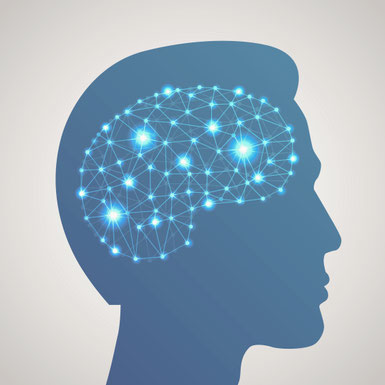Will we learn a language by downloading an app into our brain? The future of language learning
Imagine this: it's the year 2050. Instead of spending years mastering a language, all it takes is a quick app download—directly into your brain.
This futuristic vision, proposed by Evan Henshaw-Plath, co-founder of Twitter, may sound like science fiction, but with the rapid advancements in artificial intelligence (AI) and neuroscience, it may not be as far-fetched as it seems. As AI continues to revolutionize the way we learn today, from personalized learning apps to virtual tutors, the big question remains: could the future of language learning really be just one download away? Let’s dive into the possibilities, challenges, and the role AI is playing in shaping this bold future.
The 2050 prediction: an app for your brain

Neural implants promise to revolutionize brain functions, potentially enabling instant language learning.
Evan Henshaw-Plath predicted that by 2050, we could learn a language by directly downloading it into our brain. No more grammar exercises or vocabulary drills—just a quick neural upload and you're suddenly fluent in Spanish, Mandarin, or Swahili.
But how close are we to this sci-fi reality? Neural implants are already a topic of serious research, and companies like Neuralink (founded by Elon Musk) are making strides in creating brain-computer interfaces.
In fact, Neuralink has already seen promising results. Noland Arbaugh, the first person to receive a Neuralink brain implant, has demonstrated early signs of success. He shared in an interview with Lex Fridman that he was able to control a cursor on a screen simply through thought, marking a major step toward digital telepathy. This technology, still in its early stages, could pave the way for controlling devices and, one day, even acquiring knowledge or skills—like language learning—instantly.
It sounds incredible, but would this actually work for something as complex as language learning?
AI’s role in language learning today

Before we jump into the Matrix-like world of brain downloads, let’s look at what AI is doing for us now in the field of language learning.
Apps like Duolingo, Babbel, and Rosetta Stone use AI to tailor lessons based on your progress, learning style, and preferences. AI chatbots simulate real-world conversations, allowing users to practice without fear of judgment. You can practice speaking, writing, and understanding a new language all through your smartphone.
AI doesn’t stop there—it’s helping teachers too, by analyzing student performance and suggesting customized lesson plans. It’s making language learning more accessible, interactive, and effective.
But could AI really replace the experience of traditional learning?
Could our brains really handle instant language downloads?

Here's the real question: is our brain even equipped to handle such an instant language transfer? Neuroscientists are still studying how the brain processes language. It's not just about memorizing vocabulary; it’s about understanding grammar, syntax, context, and cultural nuances.
While we might be able to “upload” information into our memory, language learning also requires practice, usage, and immersion. We build neural connections over time, through exposure and interaction.
AI can support this process, but bypassing it entirely is a different matter. We’re not just learning words—we’re learning how to use them.
The pros and cons of instant learning
Let’s imagine for a moment that instant language learning becomes a reality. What are the pros and cons?
Pros:
- Efficiency: No more spending years mastering a language. Need French for a business trip? Just download it.
- Accessibility: People of all ages and backgrounds could instantly become multilingual, breaking down global communication barriers.
- Less Fear: You could avoid the anxiety of speaking a new language by relying on perfectly “downloaded” fluency.
Cons:
- Loss of Experience: Part of language learning is experiencing the culture, making mistakes, and improving through trial and error. Would we lose the richness of that journey?
- Over-reliance on Technology: What happens if the system fails? Could we forget the language if it’s not reinforced through use?
The future of traditional learning

Even if AI makes massive leaps, the traditional ways of learning may not disappear entirely. Human interaction, cultural exchange, and the slow mastery of a language could still hold immense value.
As much as we’d love the idea of instant downloads, learning a language is more than just a means to communicate—it’s a window into another culture, a way to think differently, and an experience that can’t always be reduced to an app.
Conclusion: a future we’re ready for?
So, will we learn a language by downloading an app into our brains by 2050? It's possible, but we might not want to leave the richness of the traditional learning experience behind just yet. As
technology advances, we may find that the best solution lies in blending the efficiency of AI with the authenticity of human learning.
Are you ready for a future where languages are downloaded directly into your brain? Let me know how you feel about this fascinating possibility!